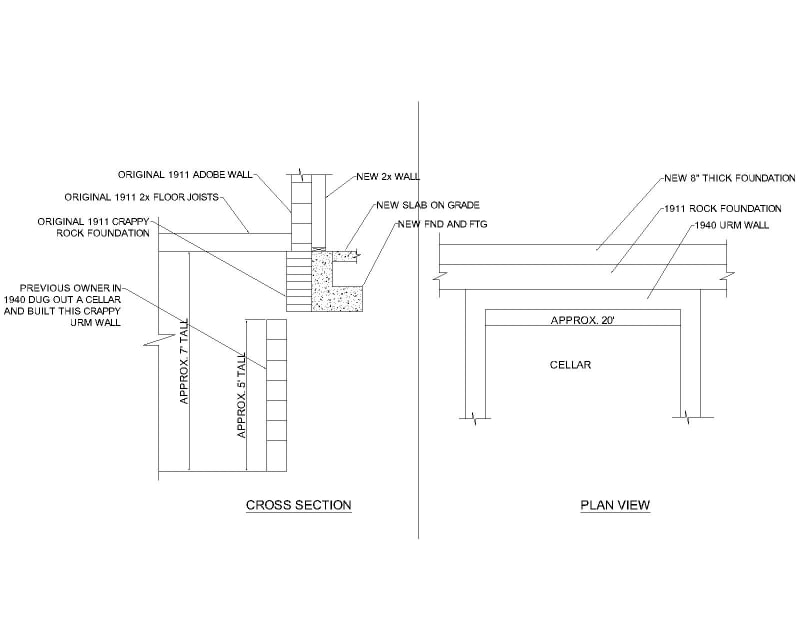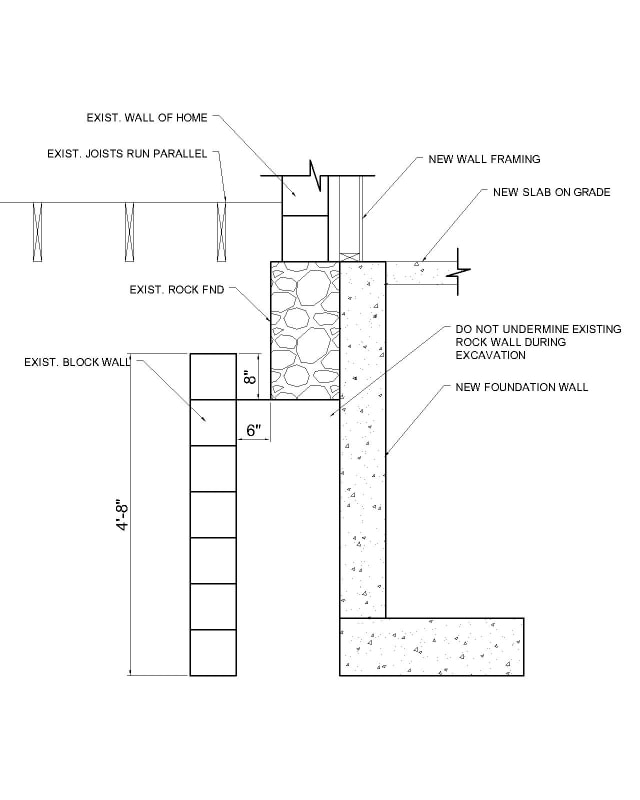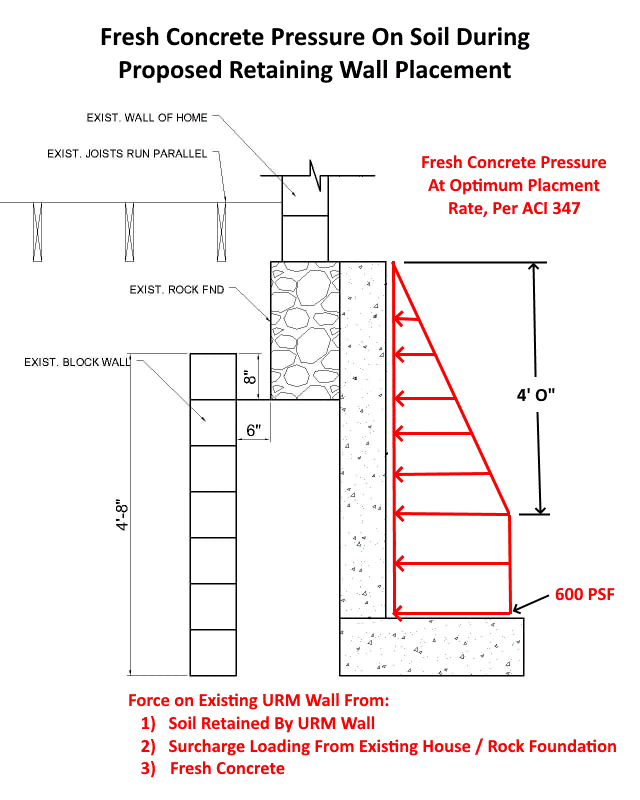I am working on a project where the owner is adding to the back of his home that was built in 1911. The previous owner of the home dug out a cellar in the 1940s and put up an approx. 5' tall URM wall to box out the cellar. See the very rough sketch below for the existing configuration along with the new wall that will go next to the existing. The roof bears parallel to the new wall so the new wall and ftg won't have much load on it. Although the new ftg won't have much load on it I am worried about it influencing the soil held back by the 1940 URM wall. Ideas are:
- Remove the URM wall and build a new retaining wall in its place
- Put a beam up in the roof that will extend the 20' length of the cellar and don't pour a new ftg/fnd for the length of the cellar. Should I still be worried about the weight of the SOG influencing the soil behind the URM wall?
- Tell the owners that the new addition has to be at least 5' away from the existing home across the cellar area.
- Leave the detail as-is and not be too worried since the new wall isn't carrying the roof load
- Build the new foundation wall down deeper to match the bottom of the URM wall, but then does that create more stress from the 1911 stone foundation onto the 1940 URM wall?
Thanks for any thoughts/ideas.

- Remove the URM wall and build a new retaining wall in its place
- Put a beam up in the roof that will extend the 20' length of the cellar and don't pour a new ftg/fnd for the length of the cellar. Should I still be worried about the weight of the SOG influencing the soil behind the URM wall?
- Tell the owners that the new addition has to be at least 5' away from the existing home across the cellar area.
- Leave the detail as-is and not be too worried since the new wall isn't carrying the roof load
- Build the new foundation wall down deeper to match the bottom of the URM wall, but then does that create more stress from the 1911 stone foundation onto the 1940 URM wall?
Thanks for any thoughts/ideas.


![[idea] [idea] [idea]](/data/assets/smilies/idea.gif)


